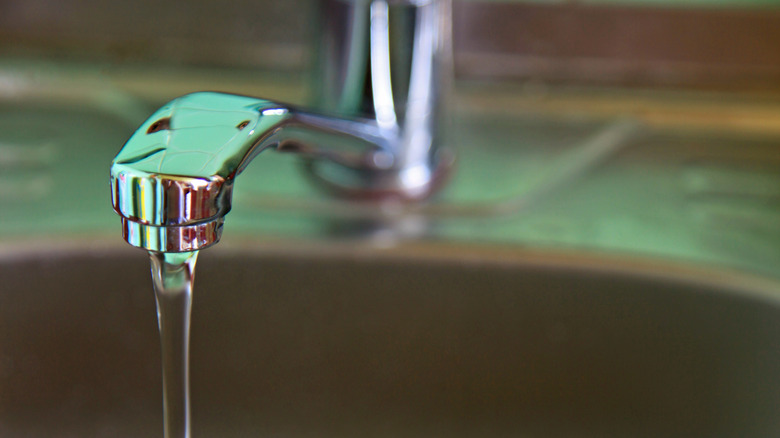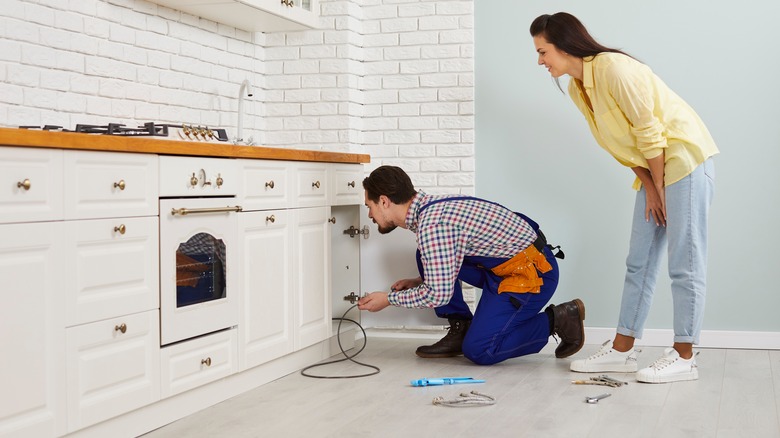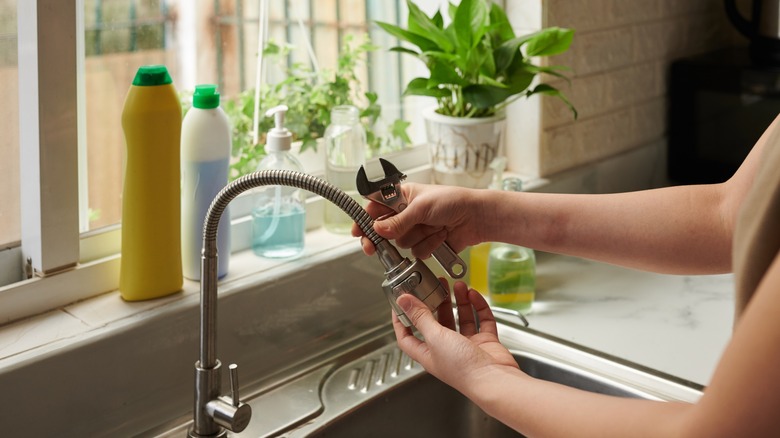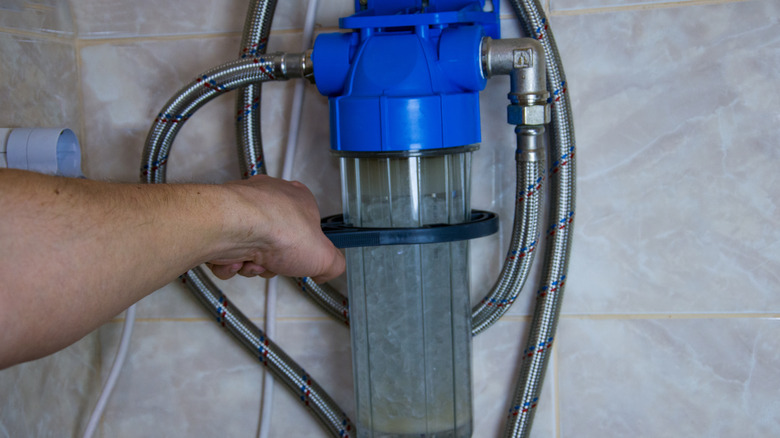How To Flush Your Kitchen Faucet Water Lines, According To An Expert
Is your kitchen faucet sputtering instead of creating a solid stream of water? Perhaps the water flow is just slow, taking longer to fill the sink than it used to. Don't ignore this problem, as it could indicate an issue with your pipes or p-traps, including a buildup of sediment in them. Hard water minerals build up along the interior of the pipes, restricting flow. Other times, rust develops and can settle along the pipes, limiting the amount of water that reaches the faucet. No matter the cause, that restriction can build up and worsen over time if not remedied.
If you begin to notice changes in your water flow, or if your home has a well, it's a good idea to flush your kitchen faucet water lines on a routine basis. To explain the process, Jake Romano, the general manager of John The Plumber shares the steps to take in an exclusive interview with House Digest.
What not to do
Slow-moving water is typically not an emergency concern unless it is very restrictive, but understanding what's happening and why can help you tackle this problem quickly, and provide some insight into preventing it from occurring again. Romano says, "Clogged water supply pipes usually happen because there's no filter or softener before the affected pipes. This is usually common on wells."
What can you do to fix this fast? "In theory, you could drain the water supply, pump some CLR into the water supply system, let it do its thing, and then flush it out. But I strongly recommend you don't do that," warns Romano. "Why? It's extremely important to protect the water supply from chemicals. This is why backflow preventers are becoming mandatory in so many places," he explains. A backflow preventer keeps water moving in one direction and doesn't allow it to flow backward, thus limiting what can get into the water supply.
A possible alternative
Thankfully, the alternative is easier than you think and less expensive. Romano suggests, "Instead, what you could try is flushing out the water supply pipes without any chemicals. Remove all the aerators off your faucets, then open the hot and cold water supplies in all the faucets and let it run until there's no hot water left — probably around 20 minutes. Then shut the faucets and reassemble the aerators. That's probably the safest bet." While you may not appreciate the lack of hot water or the higher water bill, this is a good option if you catch it early on and the material within the lines is loose enough to still flush away.
However, this may not resolve the underlying buildup within the pipes in some areas, especially where it's thickened and nearly impossible to flush. Romano states, "but in my experience, when a water pipe has a buildup of sediment inside, we have to cut it out and replace. It's not ideal, but that's the best solution." DIY plumbing tasks like these may not be something you want to tackle, though. For those looking for a more holistic solution, you could try pulling out your skills from biology to use vinegar or baking soda, but Romano warns about limitations on that, too. "There might be some companies that pump vinegar or some safe chemicals into the water pipes. But I'm not familiar with this, and I don't know how effective it would be."
Prevention goes a long way
Sometimes, the problem is also so significant you need to call a professional out to provide help. If you cannot get water moving, and flushing the pipes didn't help, it's might be better to have a plumber find out the underlying cause. Romano shares, "We saw a house with terrible water pressure. He had a water softener and filter. But, he had a copper line running from the well to his house. The water in this copper line wasn't filtered beforehand, as the filters were only inside the home. Once we cut the pipe, it was practically solid with sediment. We replaced the whole thing."
Even if you have to replace the pipes to get water moving again, Romano recommends that you don't stop there. "The best thing to do is prevent issues from ever arising. Sediment filters, water softeners, and other similar products can clean the water before it enters your plumbing system. That's going to be the best and safest bet," he explains. Talk to the team at a local home improvement store to determine which solution may be best in your area.



